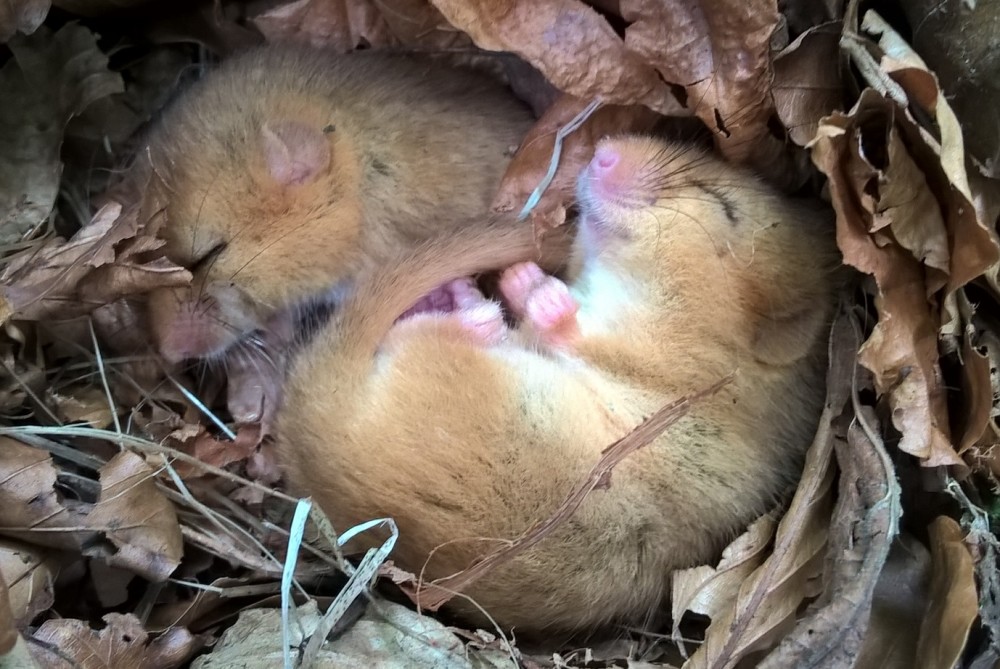Where do dormice hibernate?

Despite having its name derived from the French word dormir meaning ‘to sleep’, it is not known exactly where our hazel dormouse hibernates.
Funding for this project has now finished
Sleeping in a small shallow on the ground is a risky strategy for a tree-dwelling animal
Not many of our mammal species go into a deep sleep all winter, but hazel dormice are one of the few animals in the UK that do. And unlike bats, which roost in safe nooks and crannies, dormice come down from the safety of the trees and make a nest on the forest floor. They can be in this torpid state for several months, in seemingly vulnerable, open spots. Hazel dormice numbers are dropping in England and Wales.
We understand much of their needs during the spring and summer but very little about why they choose to hibernate where they do. Are they at risk of predation – it seems likely? Are they at risk of being trampled by people walking through the woods? And what happens when we carry out woodland management over winter – are we putting sleeping dormice in danger? We know little about how frequently dormice wake up and move to a new location. Is it usual and if, as winters become milder, it is likely to happen more often?
Learning more about hibernation helps us to help hazel dormice
It’s hard work finding hazel dormouse hibernation nests. However, if we can find where they choose to nest, what they make their nests from and how often they wake up and move around, we will know more about their needs over winter. PTES is funding Leo Gubert at the University of Exeter to undertake this task. Leo has spent years studying dormice. He’s adept at scanning a forest floor and finding tell-tales signs to indicate that a furry creature is resting just out of sight, inches away.
So PTES has asked Leo to use a range of different methods to find out more hazel dormice as the snooze their winters away. With his results, we can inform woodland owners about types of sites dormice need to hibernate safely in, what species they need to makes nests from, and when are where it’s safest to carry out woodland management to impact on them as little as possible.
Thank you to all our donors who helped us fund this work. You can help us support our dormouse work like this with a donation today:
